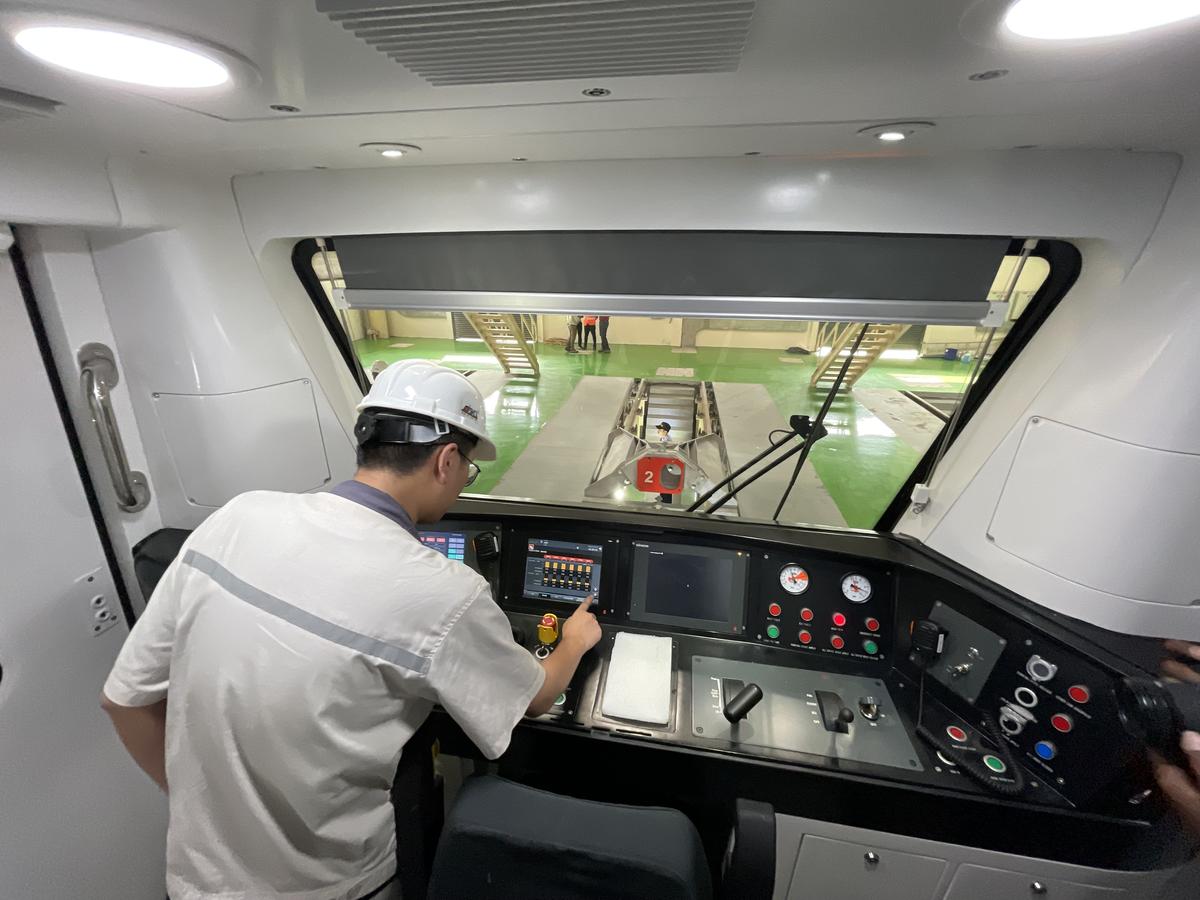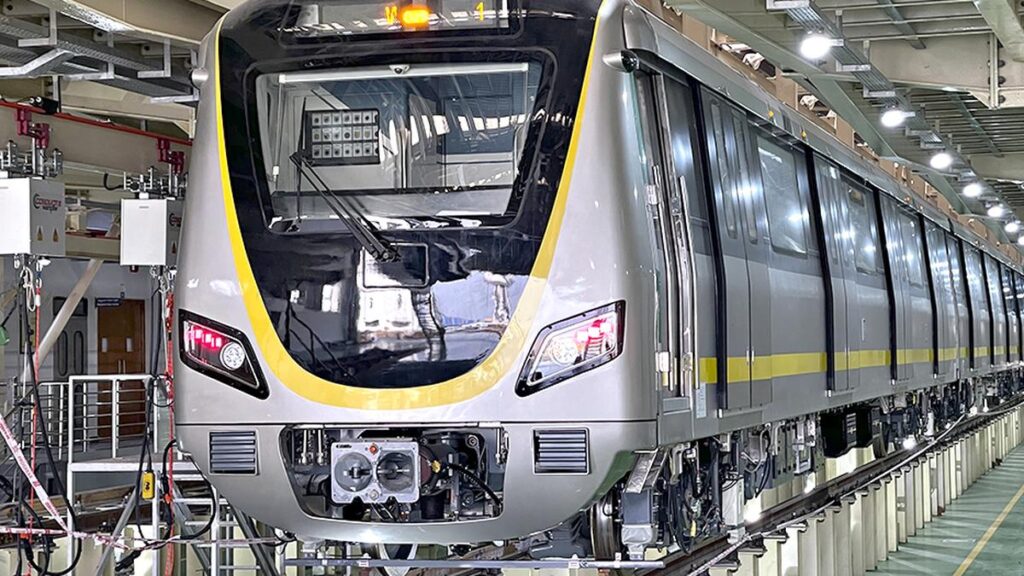
A file photo of the first set of prototype six coach metro train on Namma Metro Yellow Line, manufactured by CRRC, China, during multiple tests conducted in Inspection Bay Line (IBL) at Hebbagodi Metro depot, by (BMRCL), near Electronics city, in Bengaluru on March 6, 2024.
| Photo Credit: MURALI KUMAR K
The long-awaited Yellow Line of Namma Metro, which has faced multiple delays due to pending metro coach deliveries, is set to undergo an inspection. The Commissioner of Metro Rail Safety (CMRS) will examine the first driverless train assigned to the corridor, which arrived from China, on February 24.
The Bengaluru Metro Rail Corporation Limited (BMRCL) had received the initial batch of six train coaches from China on February 14, 2024. These were delivered to the Hebbagodi metro depot. A senior BMRCL official confirmed that the driverless train has now cleared multiple internal tests and is ready for CMRS inspection. “The CMRS has reviewed all required documents and will inspect the train on February 24. However, this is solely a train inspection, and a full Yellow Line assessment is scheduled for the end of March,” the official stated.

Transition from DTG signalling system to CBTC system
The introduction of driverless trains is part of the metro’s transition to a Communication-Based Train Control (CBTC) system, commonly known as ‘driverless technology.’ This marks a first for Bengaluru Metro, which currently relies on the DTG (distance-to-go) signalling system. CBTC technology is expected to reduce the time interval between trains from the existing two-and-a-half minutes to as low as 90 seconds. While the new trains are designed for autonomous operation, BMRCL plans to initially deploy locomotive pilots to manage the transition.

The Communication-Based Train Control (CBTC) system, commonly known as ‘driverless technology’, is expected to reduce the time interval between trains from the existing two-and-a-half minutes to as low as 90 seconds.
| Photo Credit:
MURALI KUMAR K
Stretching over 19.15 km, the Yellow Line runs from R.V. Road to Bommasandra, covering key areas such as Electronics City. The corridor has been structurally ready for some time, but the delayed arrival of driverless trains has hindered its launch. The line will feature 16 fully elevated stations, interconnecting with the Green Line at R.V. Road Station and the Pink Line at Jayadeva Hospital Station. A key objective of the Yellow Line is to improve connectivity to major corporate hubs, including Infosys and Biocon, while enhancing transport links for South Bengaluru residents.

Delay in coach deliveries
The delay in rolling out the Yellow Line can be traced back to a ₹1,578-crore contract awarded in 2019 to the China Railway Rolling Stock Corporation (CRRC) for supplying 216 metro coaches. However, CRRC failed to establish a required manufacturing plant in India, as stipulated in the contract, leading to disruptions in train deliveries. In response, BMRCL issued multiple notices to CRRC and considered invoking a ₹372-crore bank guarantee. The Chinese firm has since collaborated with Kolkata-based Titagarh Wagons to supply the remaining coaches.
BMRCL officials stated that in addition to the prototype train for CBTC, another prototype train featuring the DTG signalling system is also being supplied by CRRC. The remaining 34 train sets — comprising 14 CBTC and 20 DTG-equipped trains — are being manufactured domestically at Titagarh Rail Systems Limited in West Bengal.

37 tests
Ahead of commercial operations, driverless trains must undergo approximately 37 tests, including system integration with signalling, telecommunications, and power supply networks. “The statutory safety assessments include Oscillation Trials conducted by the Research Designs and Standards Organisation (RDSO), followed by a CMRS inspection. Based on their recommendations, final approval from the Railway Board is required before the trains are introduced for passenger services,” a BMRCL official explained.
If all necessary approvals are secured, the Yellow Line’s driverless train is expected to become operational by April this year.
Published – February 23, 2025 05:59 pm IST
Source:https://www.thehindu.com/news/cities/bangalore/driverless-train-for-bengaluru-metros-yellow-line-set-for-safety-inspection/article69254127.ece

